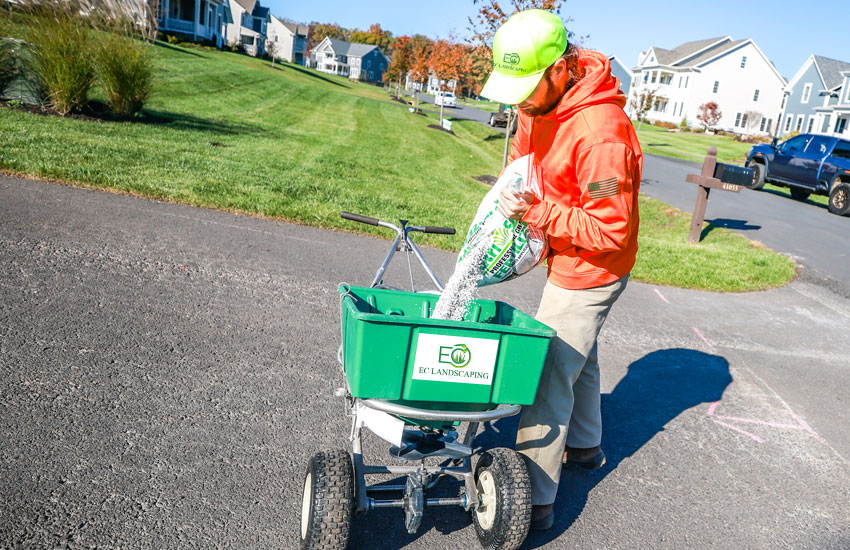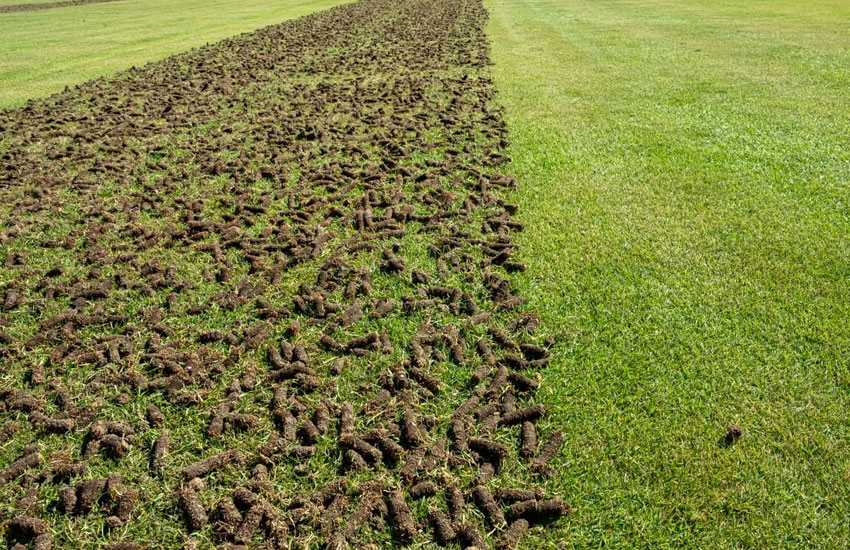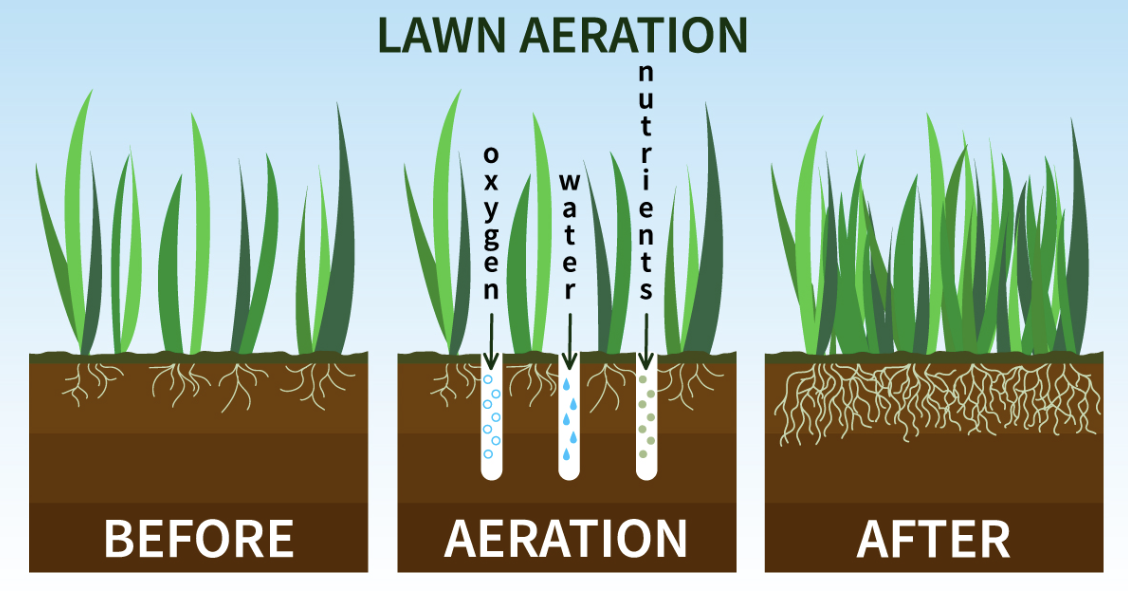Aeration Services Richfield Minnesota | Landscape Contractor
Landscaping is an essential aspect of home design that can significantly enhance the aesthetic value of a property. However, transforming outdoor spaces into stunning oases requires the expertise of skilled landscaping professionals who have experience in creating unique and functional designs. One such contractor based in Richfield, Minnesota offers exceptional landscaping services that cater to both front and backyard spaces.
This team of landscapers has a reputation for trustworthiness and customer satisfaction, which sets them apart from other contractors in the industry. They specialize in various aspects of landscaping design, including pools, patios, stone walls, and waterfalls. Moreover, they only use high-quality materials to ensure clients receive outstanding results that exceed their expectations. With competitive pricing and the ability to accept estimate requests, this contractor makes it easier than ever before to bring your landscaping dreams to life.


Aeration Services
Aeration is a crucial aspect of lawn maintenance that involves perforating the soil to allow air, water, and nutrients to penetrate the grass roots. This process helps improve root development and overall health of the lawn by enabling better absorption of essential nutrients. A well-aerated lawn can also withstand drought conditions, foot traffic, and other stressors that may damage an un-aerated lawn.
While some homeowners may opt for DIY aeration methods, it is highly recommended to seek professional aeration services to ensure optimal results. Professional aeration services employ advanced techniques and equipment that are designed to achieve maximum penetration depth without causing damage to the turfgrass. Moreover, professionals have extensive knowledge on different types of soils and grasses, which enables them to provide tailored solutions for your lawn's unique needs. This article will explore in detail what aeration entails, when it is best done, how to prepare for it, as well as aftercare tips for maintaining your newly aerated lawn.
Aeration Benefits:
- Improved air exchange between the soil and atmosphere.
- Enhanced soil water uptake.
- Improved fertilizer uptake and use.
- Reduced water runoff and puddling.
- Stronger turfgrass roots.
- Reduced soil compaction.
- Enhanced heat and drought stress tolerance.
- Improved resiliency and cushioning.

What is Aeration and Why is it Important?
Aeration, a process that involves perforating the soil with small holes to allow air, water and nutrients to penetrate the grass roots, is a critical component of maintaining healthy lawns and gardens. It is typically performed using a specialized tool known as an aerator or by manually punching holes into the ground. The benefits of aeration go beyond simply allowing essential elements to reach plant roots; it also relieves soil compaction, enhances root growth, promotes thicker turf, and improves overall lawn health.
Aeration is the process by which air is circulated through, mixed with or dissolved in a liquid or other substances that act as a fluid. Aeration processes create additional surface area in the mixture, allowing greater chemical or suspension reactions.
Soil compaction can occur due to heavy foot traffic or equipment use over time; this can lead to poor drainage and reduced oxygen flow in the soil. Aerating helps alleviate this issue by creating pathways for air, water and other nutrients to permeate through compacted soil layers. This loosens up dense areas of earth beneath your lawn's surface which enables roots to grow deeper into the ground. Ultimately, this promotes better absorption of moisture and nutrients from fertilizers or rainfall.
When done correctly at regular intervals throughout the year (typically every 1-3 years), aeration can be one of the most effective ways you can promote optimal lawn health without resorting to chemical treatments or expensive landscaping services. Whether you're dealing with brown spots on your front yard or struggling with weeds taking over your garden beds proper aeration is an important step towards achieving lush greenery that will make your neighbors envious! So why not invest in some professional-grade aerators today? Your plants will thank you for it!
When is the Best Time to Aerate Your Lawn?
Optimizing the health and appearance of your lawn requires understanding the ideal timing for soil aeration. The best time to aerate your lawn is during its growing season, when it is actively producing new roots and leaves. This typically occurs in the spring or fall, depending on where you live and what type of grass you have.
In general, cool-season grasses like Kentucky bluegrass and fescue should be aerated in the fall, while warm-season grasses like Bermuda and zoysia should be aerated in the spring. However, there are other factors to consider as well, such as soil type, moisture levels, and foot traffic. If your lawn gets a lot of use from children or pets, for example, it may need to be aerated more frequently than once per year.
It's also important to avoid aerating your lawn during times of stress. For example, if your area is experiencing a drought or extreme heat wave, it's best to hold off on aeration until conditions improve. Similarly, if you've recently fertilized or overseeded your lawn, wait at least four weeks before scheduling an aeration service. By following these guidelines and working with a professional landscaping company that understands the needs of your particular lawn, you can help ensure that your grass stays healthy and vibrant all year long.
DIY or Professional Aeration Services?
One option for improving the health and appearance of your lawn is to decide between performing soil aeration as a DIY project or hiring a professional company. Both options have their own advantages and disadvantages, and it ultimately depends on your personal preferences and expertise.
If you choose to aerate your lawn yourself, you can save money on labor costs. However, it requires time, effort, and equipment that may not be readily available. You will need to rent an aerator machine, which can be costly if you only use it once a year. Additionally, if you are not experienced with lawn care or do not follow proper techniques during the process, it could potentially damage your lawn.
On the other hand, hiring a professional company to perform soil aeration ensures that the job is done correctly by experienced professionals who have access to high-quality equipment. They also provide additional services such as fertilization and overseeding that can further enhance the health of your lawn. However, this option comes at a higher cost compared to doing it yourself. It's important to do research on different companies in order to find one that fits within your budget while still providing quality service.
| Pros of DIY | Cons of DIY |
|---|---|
| Saves money | Requires time & effort |
| Flexibility in scheduling | Equipment rental costs |
| Personal satisfaction from doing it yourself | Potential for damaging lawn if not done correctly |
| Pros of Professional Services | Cons of Professional Services |
|---|---|
| Experienced professionals ensure job is done correctly | Higher cost compared to DIY |
| Access to high-quality equipment & additional services | Less flexibility in scheduling |
| Minimal effort required from homeowner | May require research in finding trustworthy company |
Whether you choose DIY or professional soil aeration services depends on various factors including budget constraints and personal experience with lawn care. Ultimately, the goal is to improve the health and appearance of your lawn while minimizing potential damage. By weighing the pros and cons of each option and doing thorough research on companies, you can make an informed decision that will benefit your lawn in the long run.
How to Prepare Your Lawn for Aeration
Preparing your lawn for soil aeration involves several key steps that are essential for ensuring the best possible results. Aeration is a process that involves creating small holes in the soil to allow air, water, and other nutrients to penetrate deep into the root system. This helps promote healthy plant growth and encourages stronger roots.
To prepare your lawn for aeration, you should start by mowing it down to a shorter length. This will make it easier for the machine used for aeration to penetrate through to the soil below. Additionally, you should remove any debris such as sticks or rocks from the surface of your lawn before beginning the process.
Next, you'll want to water your lawn thoroughly in order to help loosen up the soil and make it easier for the aerator's tines to penetrate deeper into it. After watering, wait until the ground is no longer overly saturated with moisture before proceeding with aeration. Finally, be sure to mark any underground hazards such as irrigation lines or sprinkler heads so that they are not damaged during this process.
Preparing your lawn properly before aerating can have significant benefits on its overall health and appearance. By following these simple steps beforehand, you will ensure that your lawn receives all of the necessary nutrients required for optimal growth and development.
Aftercare Tips for Your Aerated Lawn
After aerating your lawn, it is important to follow proper aftercare tips to ensure the best results. Watering and fertilizing are crucial factors in maintaining a healthy and thriving lawn post-aeration. It is advisable to avoid heavy foot traffic on the aerated area for at least a few weeks, allowing the soil time to settle and recover. Additionally, regularly monitoring for signs of improvement can help you determine whether your efforts are paying off or if further action needs to be taken.
Watering and Fertilizing
Watering and fertilizing are crucial components in maintaining healthy lawns and gardens, especially after aeration services. Here are three tips for properly watering and fertilizing your lawn:
Watering: After aerating your lawn, it is important to water it deeply. This helps the grass roots to grow deeper into the soil and promotes better absorption of nutrients from fertilizer. It is recommended to water your lawn 1-2 inches per week, depending on the climate conditions in your area.
Fertilizing: Proper fertilization is essential for promoting healthy growth of grass after aeration services. Use a high-quality fertilizer that contains all the necessary nutrients such as nitrogen, phosphorus, and potassium in balanced proportions. Apply fertilizer according to the manufacturer's instructions or consult with a professional for guidance on how much fertilizer you should use.
Timing: The timing of watering and fertilizing is also important for maintaining a healthy lawn after aeration services. Water your lawn early in the morning or late in the evening when temperatures are cooler to reduce evaporation rates. Similarly, apply fertilizer at least two weeks before or after aerating your lawn to prevent any damage caused by over-fertilization. By following these tips, you can ensure that your newly aerated lawn remains lush and green throughout the year!
Avoiding Heavy Foot Traffic
To maintain a healthy and vibrant lawn, it is crucial to minimize heavy foot traffic. Heavy foot traffic can compact the soil, making it difficult for air, water, and nutrients to penetrate down to the roots of the grass. This can lead to thinning of the lawn, yellowing of the blades, and even bare patches. In addition to limiting heavy foot traffic on your lawn, aerating your lawn regularly can help improve soil compaction and promote root growth.
Aeration involves creating small holes in the soil by removing small plugs of dirt from the ground. This process allows air, water, and nutrients to reach deeper into the soil where they are needed most. Aeration also helps break up thatch - a layer of dead grass stems and roots that accumulates on top of the soil over time - which can obstruct water and nutrient absorption. By incorporating regular aeration services into your lawn care routine along with minimizing heavy foot traffic on your lawn, you can ensure that your lawn stays healthy and lush all year round.
| Advantages | Disadvantages |
|---|---|
| Improves soil drainage | Can be expensive |
| Promotes root growth | May cause temporary damage to grass |
| Reduces soil compaction | Requires specialized equipment |
| Breaks up thatch buildup | Needs repeated applications over time |
| May not be effective on heavy clay soils |
Monitoring for Signs of Improvement
Monitoring for signs of improvement is an essential step in ensuring that your lawn care routine is effective and that your efforts are making a positive impact on the health and appearance of your lawn. One way to monitor the success of your aeration services is to keep an eye out for changes in grass growth patterns. Aeration creates small holes in the soil, allowing air, water, and nutrients to penetrate deeper into the roots. This process promotes healthy root growth, which leads to stronger grass blades above ground.
Another way to monitor progress is by regularly testing soil pH levels. Over time, soil can become too acidic or alkaline due to factors such as fertilization or environmental conditions. These imbalances can stunt plant growth and lead to discoloration or diseases. By monitoring pH levels before and after aeration services, you can ensure that your lawn remains within an optimal range for healthy plant growth. Overall, monitoring for signs of improvement provides valuable feedback on the effectiveness of aeration services and allows you to make necessary adjustments for optimal lawn health.
Frequently Asked Questions
How long does it take for the grass to recover after aeration?
The recovery time of grass after aeration varies depending on various factors such as soil type, weather conditions, and maintenance practices. Generally, it takes between 7 to 14 days for the grass to fully recover and start showing noticeable improvements in growth and health.
What is the difference between core aeration and spike aeration?
Core aeration involves removing small plugs of soil from the lawn, allowing for better airflow, water and nutrient absorption. Spike aeration simply pushes holes into the ground without removing soil. Core aeration is generally considered more effective in promoting healthy grass growth.
Can aeration help with thatch buildup in the lawn?
Aeration can help reduce thatch buildup in lawns by creating openings in the soil, allowing water and nutrients to penetrate deeper into the roots. This promotes healthier turf growth and breaks down organic material. Core aeration is especially effective for this purpose.
Is it necessary to water the lawn after aeration?
Watering the lawn after aeration is important as it helps to ensure that the soil is sufficiently moistened and allows for better absorption of nutrients. It also aids in root growth, helping to establish a healthier and more vibrant lawn.
How often should you aerate your lawn?
Lawn aeration frequency depends on soil type, grass species, and climatic conditions. In general, cool-season grasses require annual or bi-annual aeration in fall or spring while warm-season grasses need it in late spring or early summer.
ADDITIONAL SERVICES WE OFFER IN RICHFIELD MN:
HELPFUL INFO ABOUT RICHFIELD, MN
Richfield is a suburban city in Hennepin County, Minnesota, United States near the confluence of the Mississippi River and the Minnesota River at Fort Snelling.Wikipedia • Things to do • Google map
Landscaping with Passion, Precision, and Purpose
Our professional lawn and landscaping maintenance services have been designed with you in mind.
